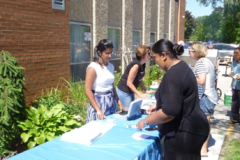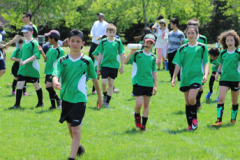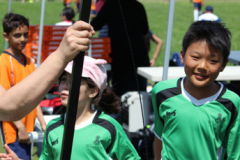What Is Montessori?
“There was no method to be seen, what was seen was a child…acting according to its own nature.”
Dr. Maria Montessori from Secret of Childhood
The “Montessori method” developed from the work of Dr. Maria Montessori in the early 1900’s from her efforts to scientifically study the child’s true nature. She observed children free to engage in activities of their own choice in a well-ordered physical environment. She discovered that young children under these circumstances return to a normal state of being in harmony with their entire environment. She observed that these “normalized” children show such qualities as spontaneous self-discipline, love of order and concentrated attention and interest to intellectual activity.
Montessori teaching today aims to duplicate this environment by following such laws of nature as:
-
- Observation
- Individual Liberty
- Preparation of the Environment
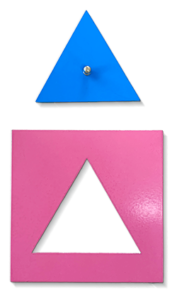
Montessori Provides the Environment & Materials
The basic premise of the Montessori philosophy of education is that all children carry within themselves the person they will become. The Montessori classroom provides the environment and materials that the child needs for his personal development while allowing him the freedom to choose his activities according to his own periods of interest and readiness in a non-competitive environment.
The Goal of Early Childhood Education
Dr. Montessori believed that every person must educate himself; that a teacher is merely there to provide information and to guide a student through the learning process. She felt, therefore, that the goal of early childhood education should be to cultivate in the child curiosity, a love for knowledge and a strong desire to learn.
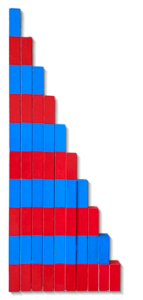
The Montessori Approach
The Montessori classroom approaches this goal in two ways. First, by allowing each child to experience the excitement of learning by his own choice and at his own pace. Secondly, by helping him to perfect all of his natural tools for learning so that his ability will be at a maximum in future learning situations. The Montessori classroom fulfills both of these long-range purposes in addition to the immediate purpose of providing the child with specific information (sounds, mathematics, etc).

“Absorb” the Information
The young child acquires information naturally by employing all of his senses to explore his surroundings. He literally “absorbs” the information he receives with no effort at all and retains this ability until he is almost 7 years old. Dr. Montessori reasoned that a child’s development could be enriched by an environment where he could freely handle materials that would demonstrate educational information to him. For more than 60 years Montessori classrooms have demonstrated that a young child can learn to read, write and calculate in the same natural way that he learns to walk and talk.
Explore and Learn
In order to learn, there must be concentration. A child concentrates best by fixing his attention on a specific, purposeful task he is performing with his hands. All the equipment in the classroom entices the child to explore and learn with the use of his hands.
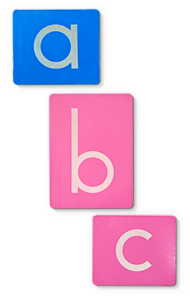
A Unique Method of Education
Montessori is a unique method of education designed to take advantage of the child’s sensitive period for learning between the ages of 3-6 when he can absorb information easily from an enriched environment. The habits and skills, which the child develops here are good for a life time. They will help him to work more efficiently, to observe more carefully and to concentrate more effectively throughout his life.
Future Success and Happiness
The intellectual progress is naturally accompanied by emotional and spiritual growth. The child becomes aware of and learns to love and care for himself and the people and things around him. He learns cooperation and gains inner discipline and independence, which leads to a high sense of self-esteem. The Montessori method offers individual attention to the whole development of the child and the foundation on which the child can build his future success and happiness.
Maria Montessori
Dr. Maria Montessori, Italy’s first female physician and a world-renowned educator, developed an approach to education that is based on the child’s natural desire to learn, combined with a basic respect for the individual child.
- She found, through her observations, that children between the ages of 0 and 6 years absorbed everything around them like a sponge, and that the children learned without effort. She called this phenomenon “The Absorbent Mind“. It follows that a child’s experience could be enriched by a classroom where he could handle special materials which would demonstrate basic educational information.
- Dr. Montessori observed another childhood trait … “The Sensitive Years” … which are periods of time during which it is easier for a child to learn a specific skill than at any other period of life. This observation has been confirmed by modern scientific research.
The Montessori classroom takes advantages of these traits, using specialized Montessori materials and unique ways of showing children how to teach themselves.

